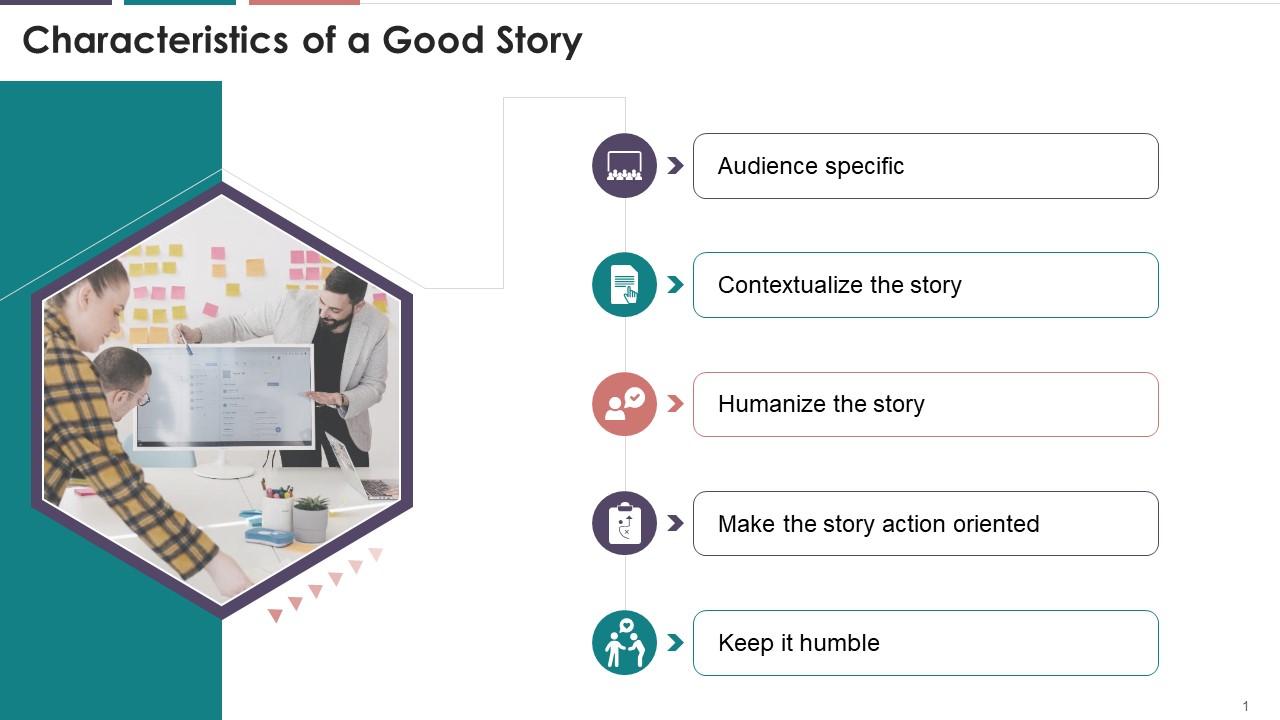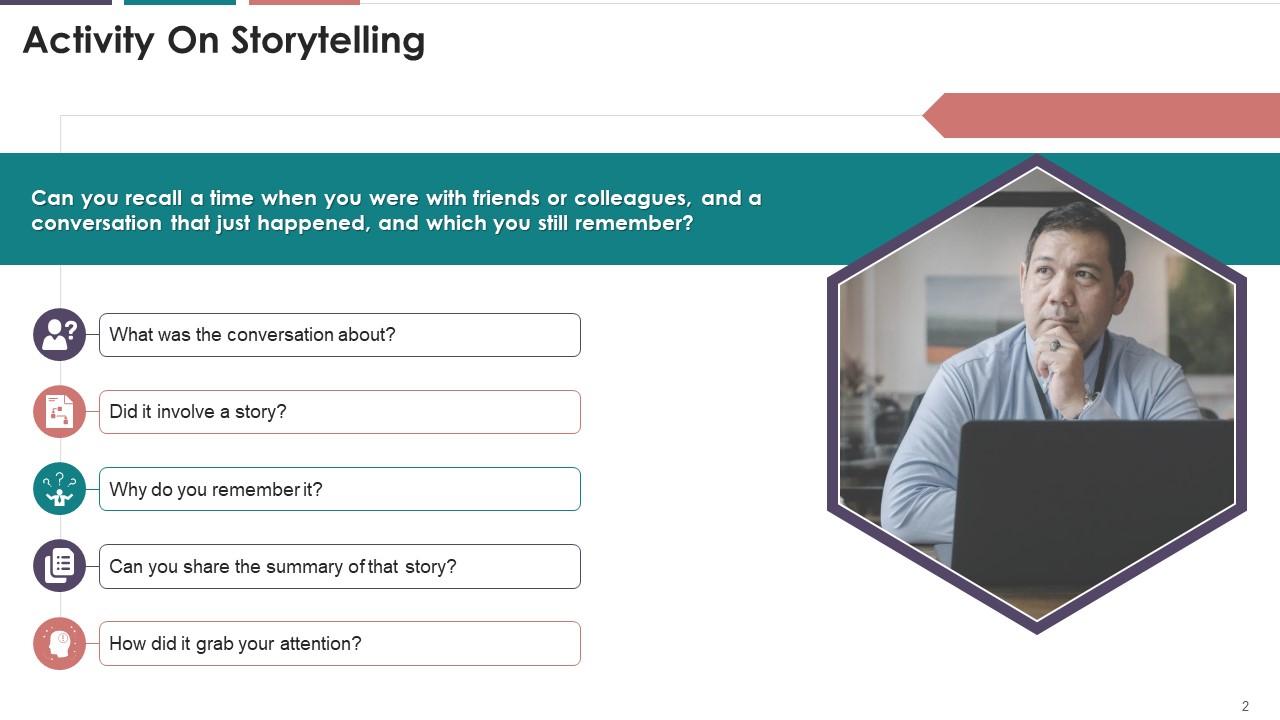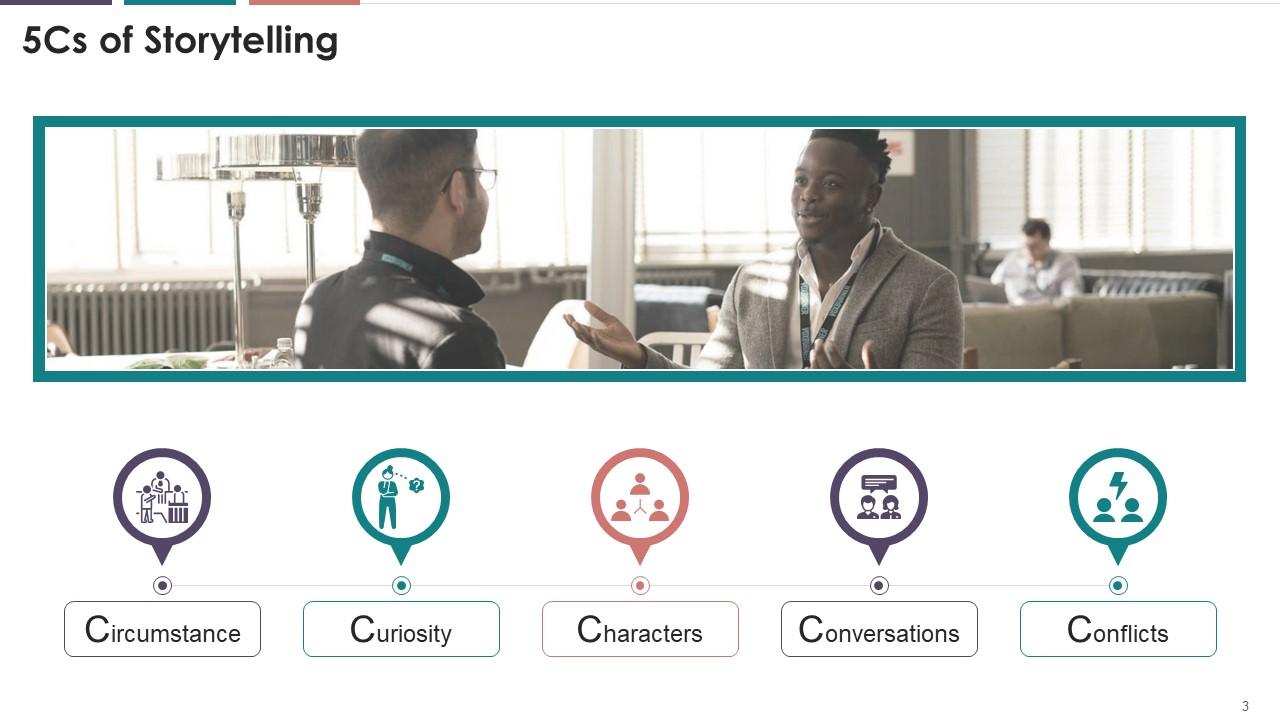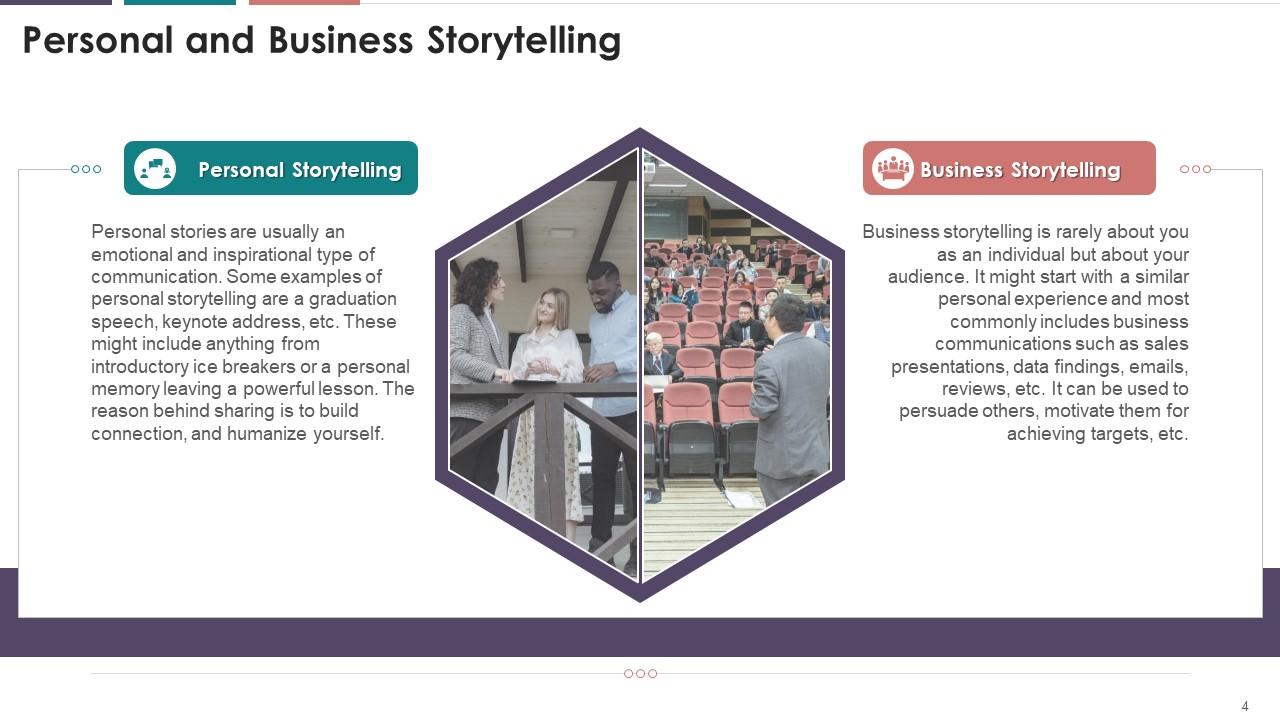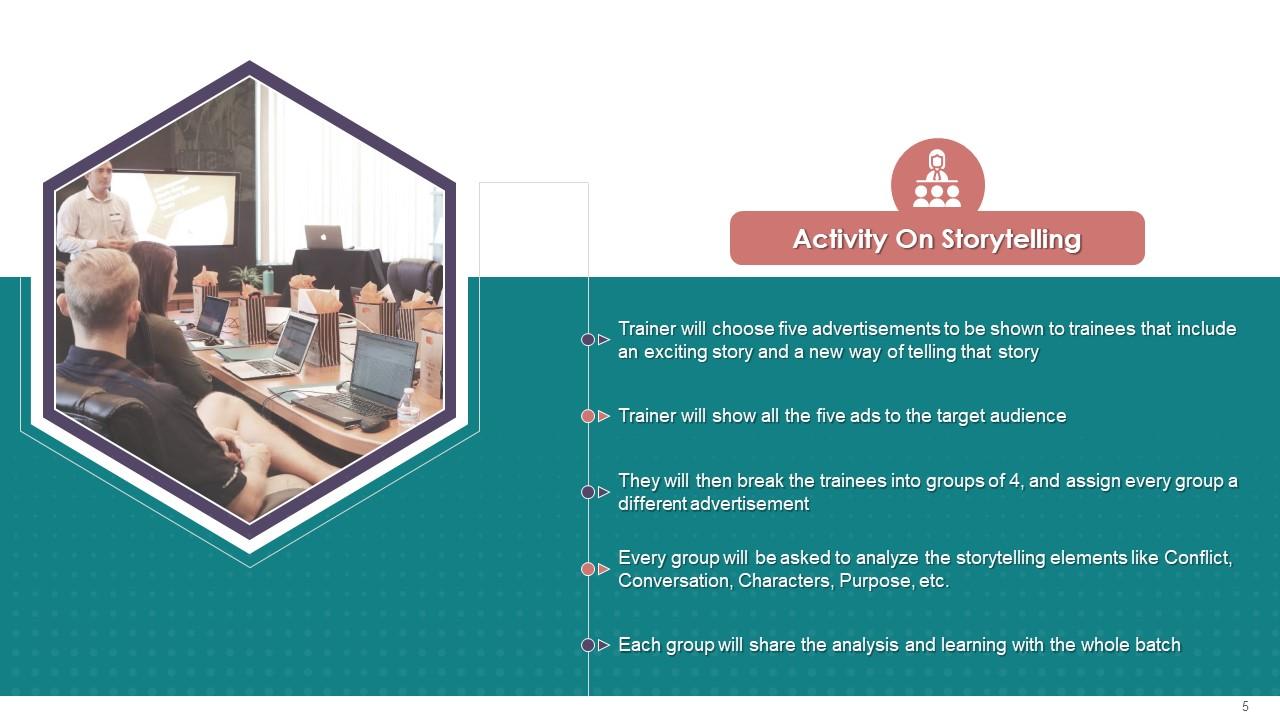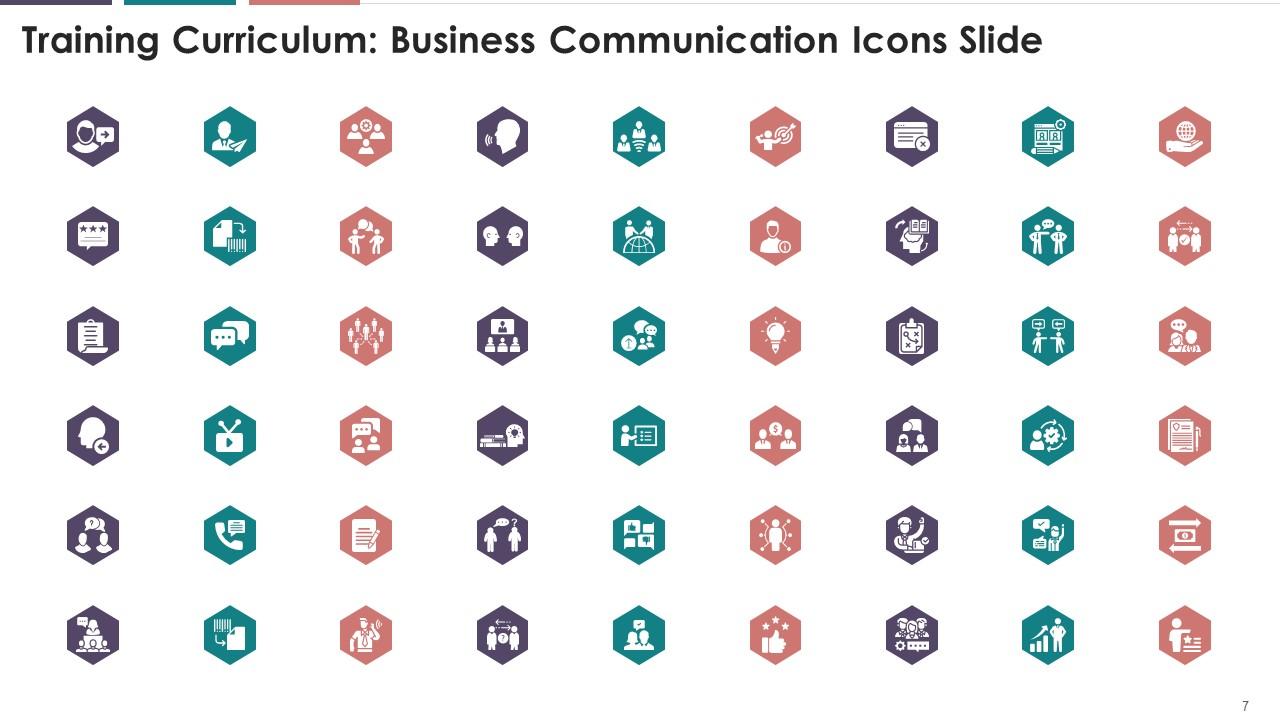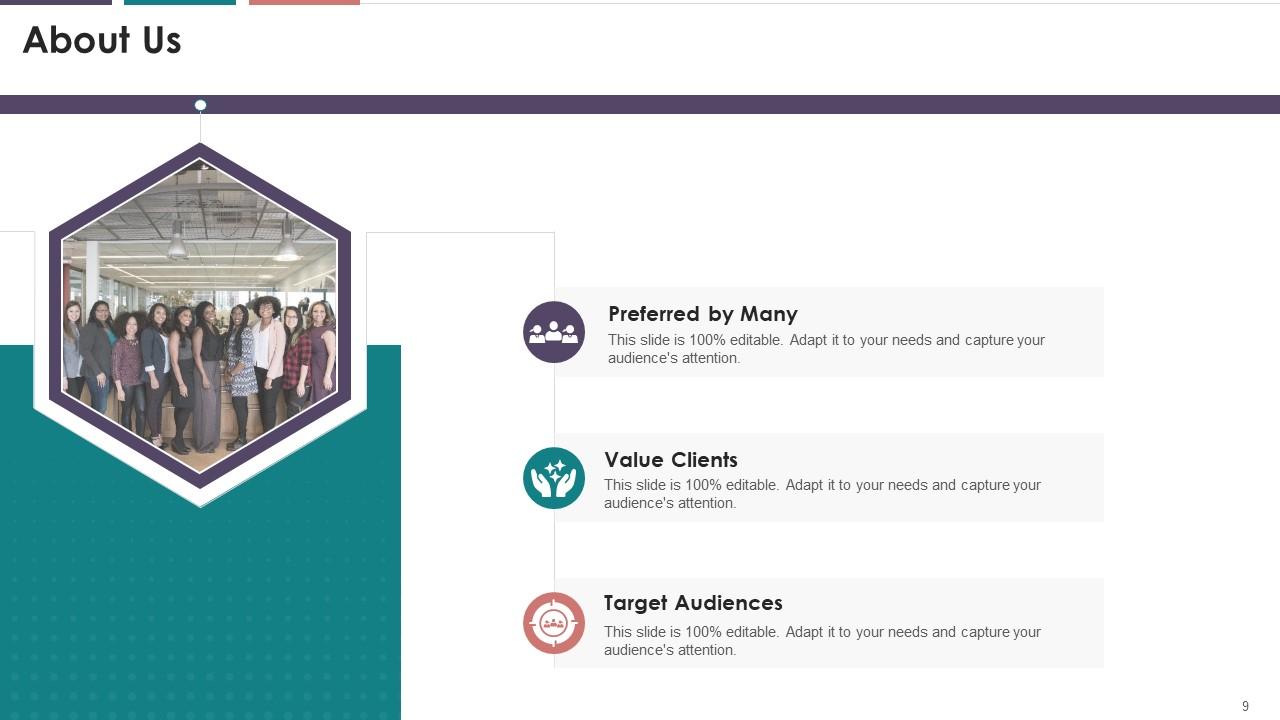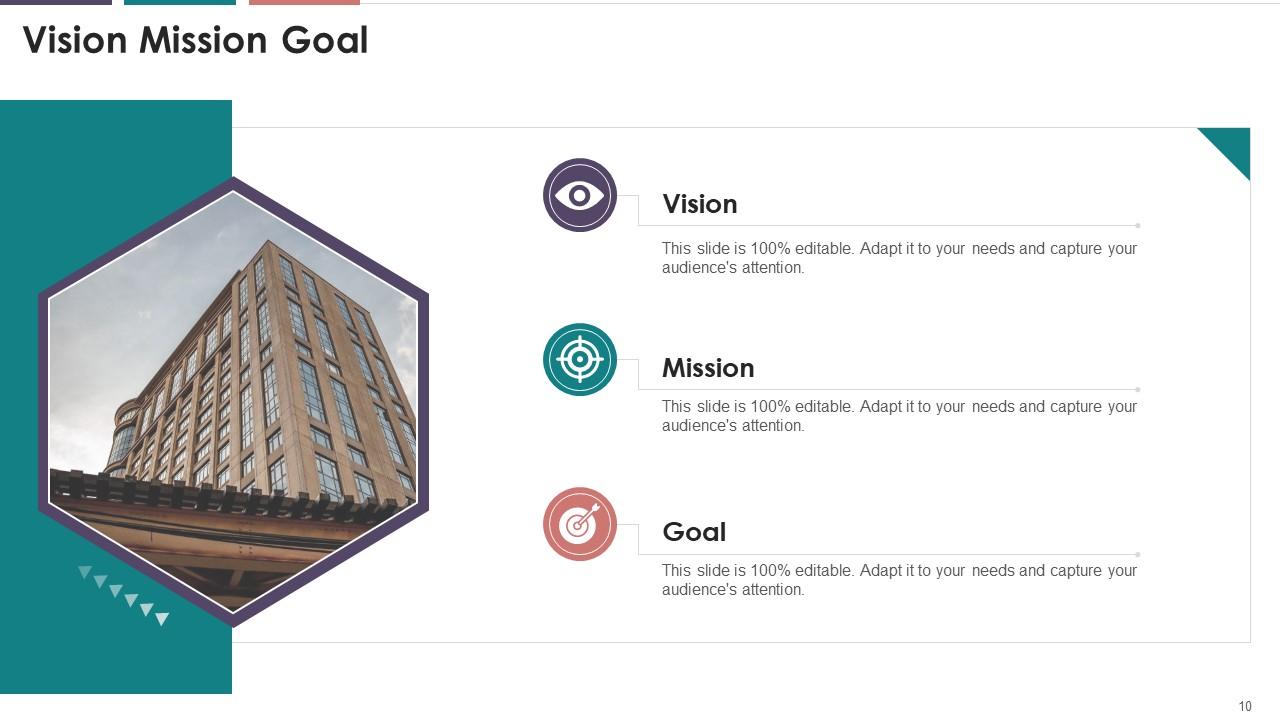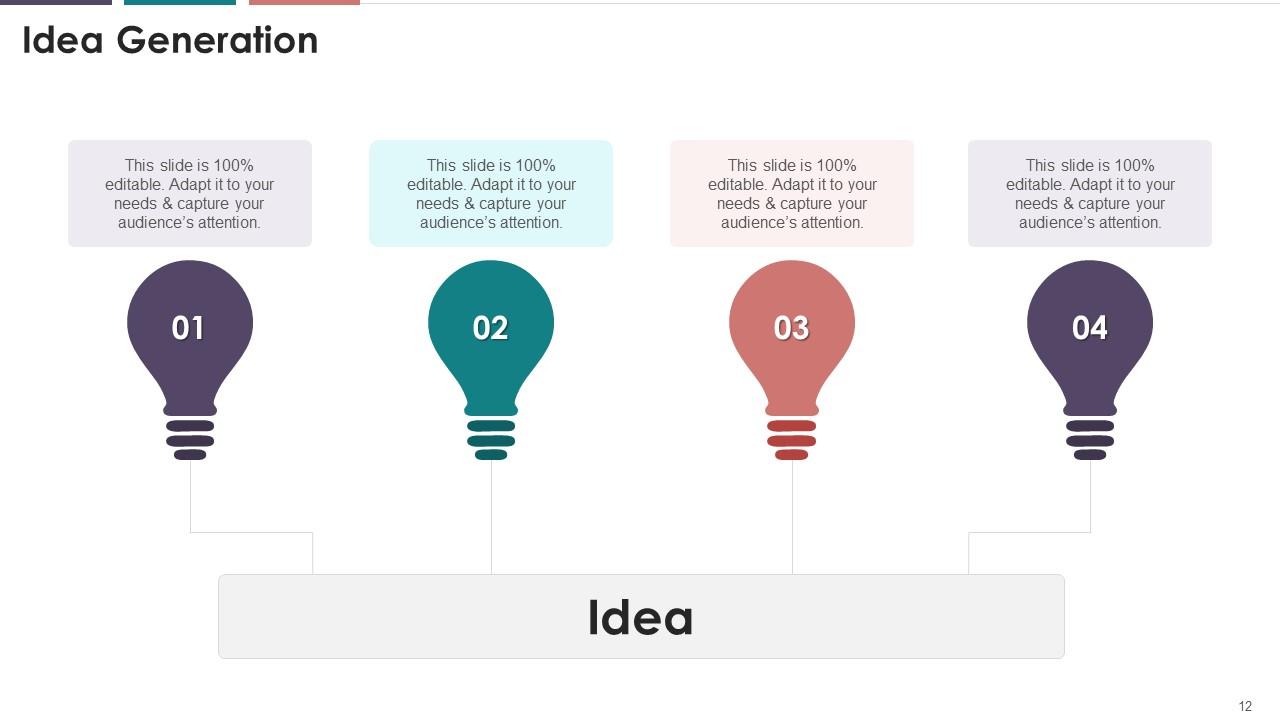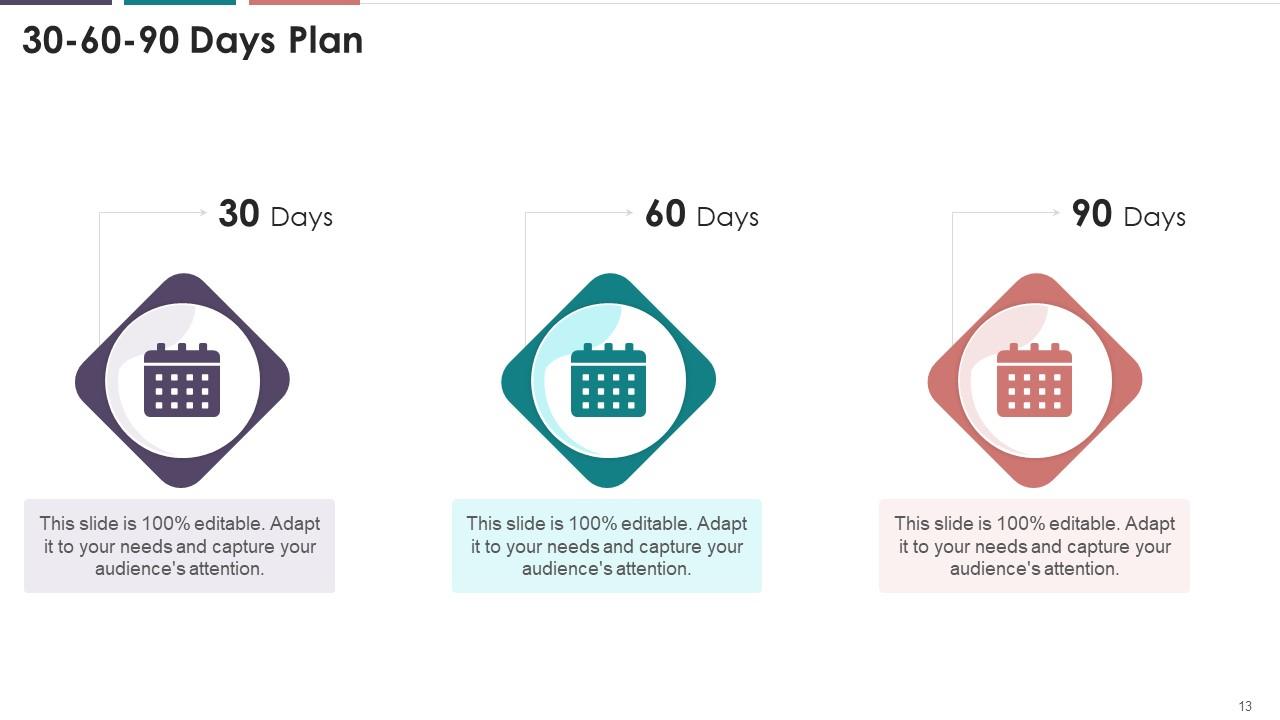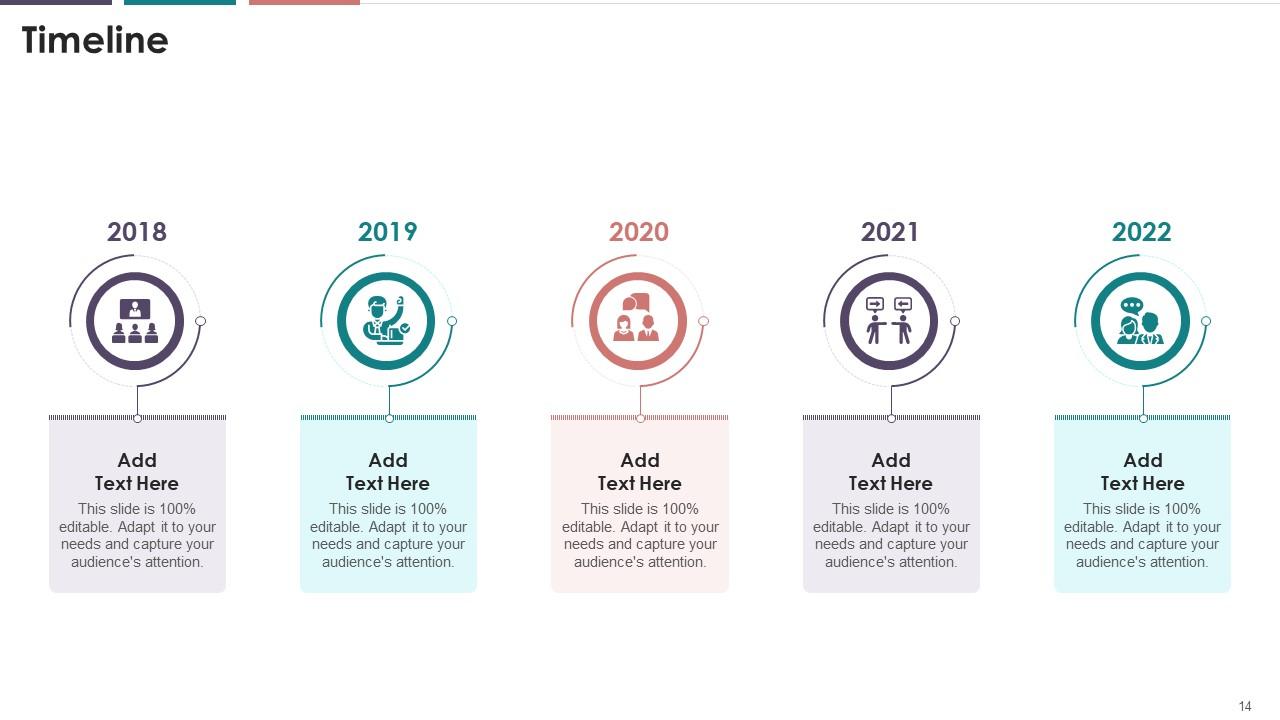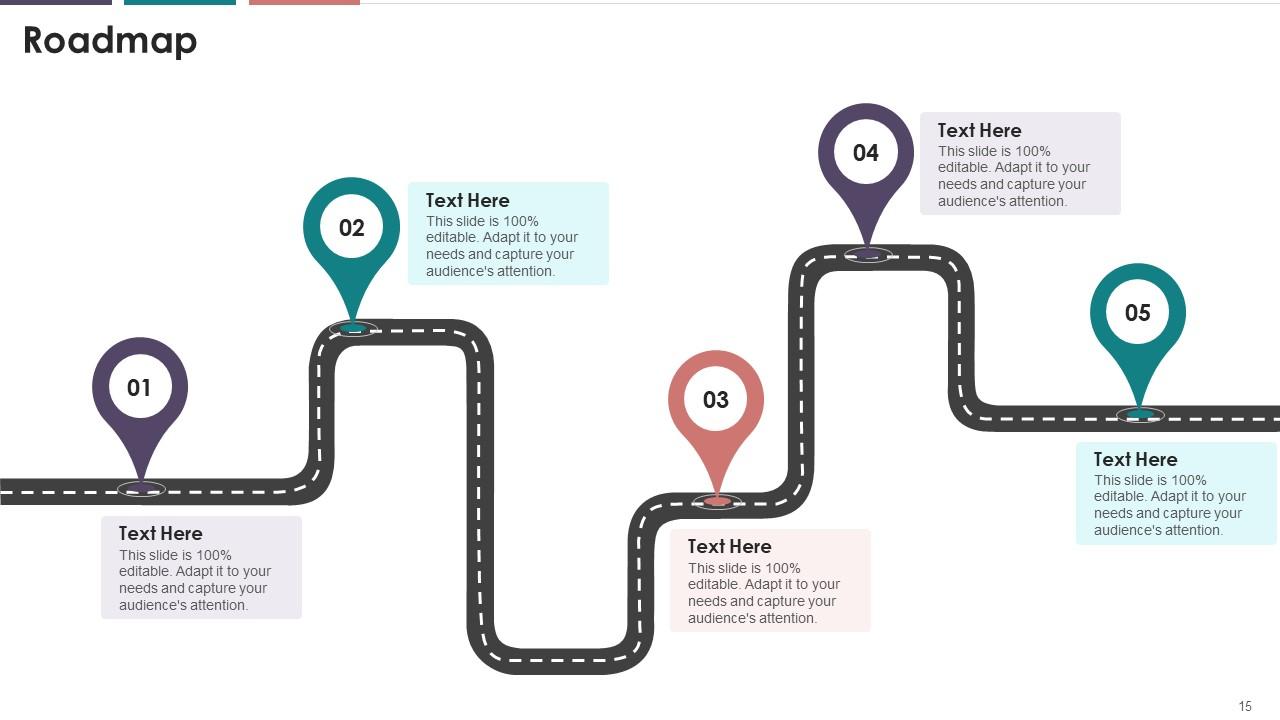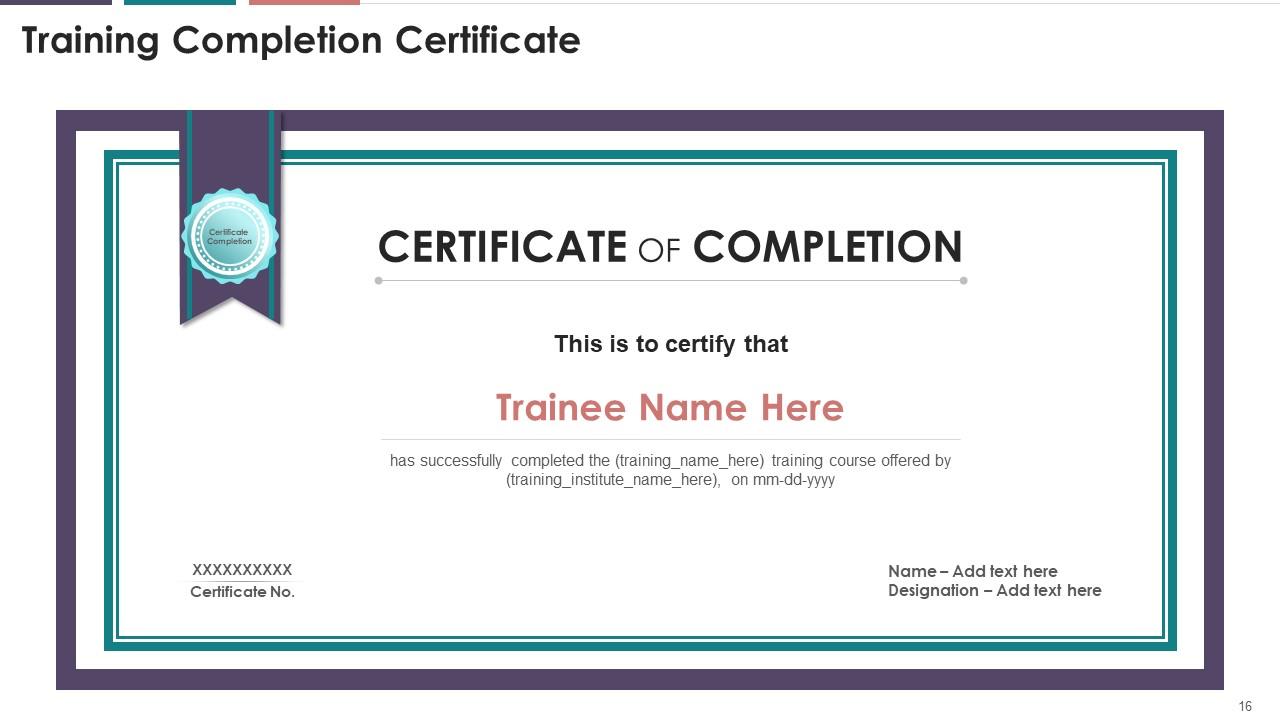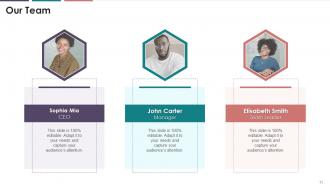Characteristics Of A Good Story In Business Communication With Activity Training Ppt
This set of slides highlights the 5Cs of storytelling circumstance, curiosity, characters, conversations, and conflicts. It also showcases the difference between personal and business storytelling. It also includes activities on storytelling that trainers can use to make the training session more interactive.
This set of slides highlights the 5Cs of storytelling circumstance, curiosity, characters, conversations, and conflicts. It..
- Google Slides is a new FREE Presentation software from Google.
- All our content is 100% compatible with Google Slides.
- Just download our designs, and upload them to Google Slides and they will work automatically.
- Amaze your audience with SlideTeam and Google Slides.
-
Want Changes to This PPT Slide? Check out our Presentation Design Services
- WideScreen Aspect ratio is becoming a very popular format. When you download this product, the downloaded ZIP will contain this product in both standard and widescreen format.
-

- Some older products that we have may only be in standard format, but they can easily be converted to widescreen.
- To do this, please open the SlideTeam product in Powerpoint, and go to
- Design ( On the top bar) -> Page Setup -> and select "On-screen Show (16:9)” in the drop down for "Slides Sized for".
- The slide or theme will change to widescreen, and all graphics will adjust automatically. You can similarly convert our content to any other desired screen aspect ratio.
Compatible With Google Slides

Get This In WideScreen
You must be logged in to download this presentation.
PowerPoint presentation slides
Presenting Characteristics of a good story in Business Communication with activity. This PPT presentation is thoroughly researched by the experts, and every slide consists of appropriate content. All slides are customizable. You can add or delete the content as per your need. Download this professionally designed business presentation, add your content, and present it with confidence.
People who downloaded this PowerPoint presentation also viewed the following :
Content of this Powerpoint Presentation
Slide 1
This slide mentions the main features of a good story.
Instructor’s Notes:
- Audience specific: To know more about your target audience, informal conversations are best. Building on this knowledge, a speaker can always prefer storytelling to glean out their needs and requirements. The closer your story is to audience’s concerns, the better it is for all stakeholders
- Contextualize the story: An individual, while sharing a story must make sure that he/she contextualizes the story. To contextualize means to analyze an event in terms of concepts surrounding it. For Example, when reading a novel written during women’s civil rights movement, it’s advised to keep feminist perspectives in mind
- Humanize the story: To humanize means to make a story friendlier and relatable to humans. Humanization makes the concept more understandable and refined so that people find it easy to relate and appreciate
- Make the story action oriented: Being specific reduces the chances of confusion. While recounting a story, the speaker should prefer giving practical advice and clear direction. The message then hits home and empowers audience; it also helps them take action and make their own story
- Keep it humble: A story should be kept humble i.e., it should not include elements like excessive pride. It should simply provide a motivating and encouraging lesson which people can relate to their life
Slide 2
This slide illustrates an activity that the trainer can use to discuss some stories or experiences of the target audience. This activity will help the trainer to grab attention and energize the crowd.
Instructor’s Notes:
After this activity, participants will realize that it's easy to connect with and remember stories rather than concepts. To send a message that a person should relate to, it should “preferably” be in the form of a story
Slide 3
This slide illustrates the 5Cs of storytelling that are circumstance, curiosity, characters, conversations, and conflicts.
Instructor’s Notes:
- Circumstance: The circumstance is one of the core elements of storytelling. While crafting a story, the speaker has to introduce the circumstances in which the action in the story happens. It is equivalent to the context. The circumstance helps the speaker establish the scene and provide the audience with all the required information to better understand the story. The circumstance clarifies the when, where and why of the story. This improves audience engagement and adds a compelling reason to be the story
- Curiosity: A brilliant introduction is crucial for a story's success, but it does not mean that the whole task is done. Once you gain the audience's attention, your next concern should be to stimulate the listener to be consistent throughout the story. Creating suspense makes them curious to know about what will happen next. Eventually, this builds interest and encourages the audience to learn more
- Characters: The speaker needs to be very particular while choosing the characters featured in the story. The characters, roles, emotions, characteristics, etc., play a considerable role in storytelling as people want connection. The characters become the basis that people can relate to or want to be like. Choose your characters carefully to make it easier for the audience to visualize or relate to them
- Conversations: People these days are more likely to engage with and pay attention to the conversation between multiple characters involved. Conversations refer to the dialogues involved in your story, which drive real engagement on the part of the audience. A dull story without any exchanges involved may lead to a lack of interest, so the success of storytelling depends upon human-interest element. The speaker should consider factors like: Will my story get people talking? Will they revisit my story and reshare it with their peers? The true success of the story lies in answers to all these questions
- Conflicts: Every story must include a conflict. The conflict here refers to a problem followed by corresponding solution. Conflict is the key to grabbing audience's attention as it encourages them to invest time in making efforts to unfold. Most successful business stories deeply connect with their target audiences. These leveraging the power of relevant conflicts, adding value to them. While crafting a story related to business or otherwise, the speaker should carefully consider the problems and challenges that it wants to highlight. Then, it must showcase how the business can help resolve the issues highlighted
Slide 4
This slide mentions the difference between personal and business storytelling in business communication.
Slide 5
This slide illustrates an activity that the trainer can use to discuss and understand trainees' learning.
Characteristics Of A Good Story In Business Communication With Activity Training Ppt with all 21 slides:
Use our Characteristics Of A Good Story In Business Communication With Activity Training Ppt to effectively help you save your valuable time. They are readymade to fit into any presentation structure.
-
Loved the templates on SlideTeam, I believe I have found the go to place for my presentation needs!
-
“One of the best experiences with SlideTeam for my presentation.Everything on time, communication is efficient and price is reasonable. All good in one place.”


